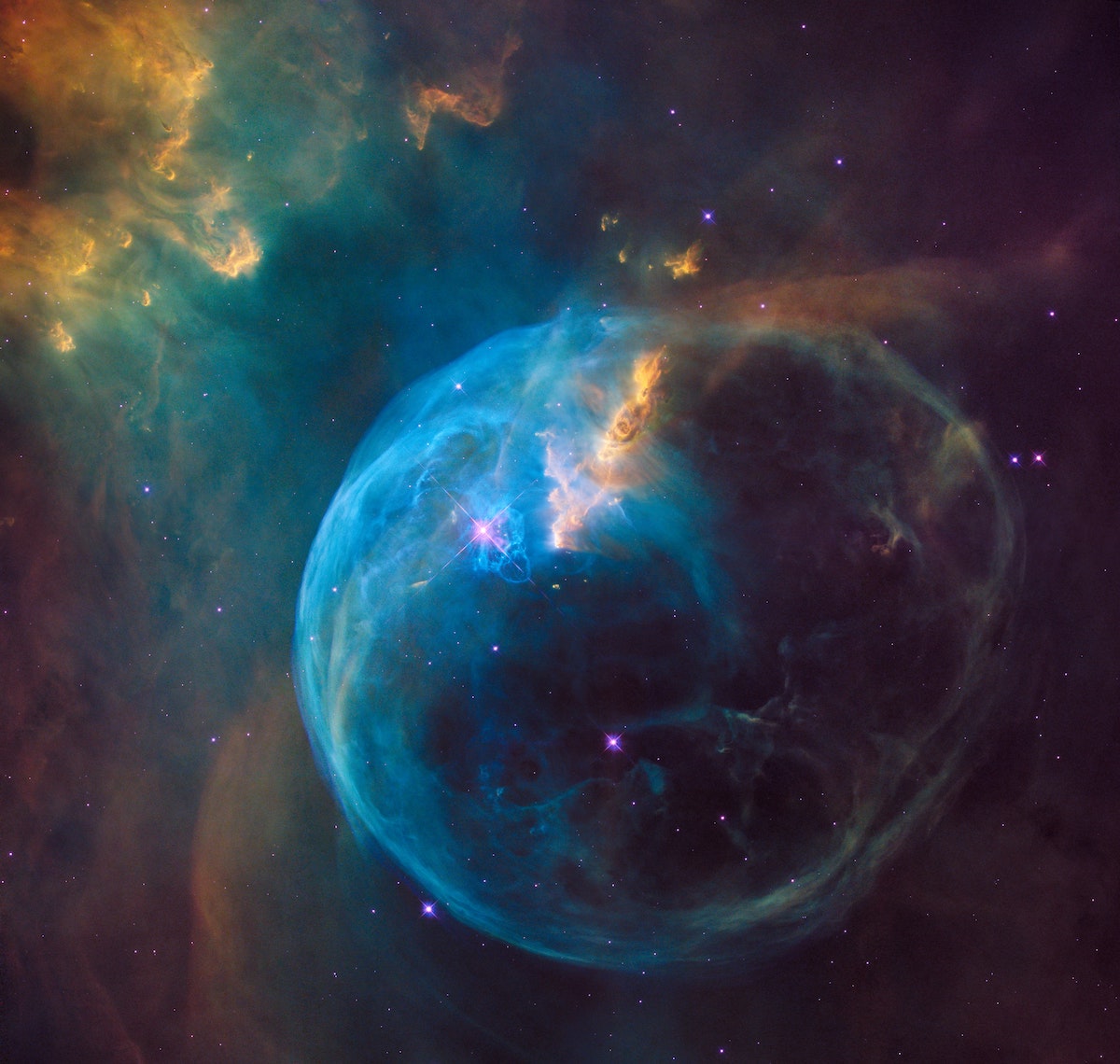 Earth & Space
Earth & Space
Hidden in plain sight: how an invisible ring in the sky uncovered a past cosmic collision
Sometimes, looking at things in a new way reveals brand-new secrets about it. By scanning the cosmos for light invisible to our eyes, the site of an ancient stellar collision was revealed by a large, mysterious ring in the sky. Its discovery provides us with a rare opportunity to study what happens after two stars collide to form one.

Our understanding of the universe relies on what we see and what we make of it. For millennia, humans studied the cosmos based on what our eyes can see. Yet, the colors and light our eyes pick up make up only a small sampling of all the possible flavors of light permeating the cosmos. If we look at the universe in other ways that our eyes cannot make out, we can discover important details and new wonders about our cosmos and how it works. The “Blue Ring Nebula” is one example of a fascinating object we would never see without shifting our view to study the universe in a new light.
Unlike its namesake, the Blue Ring Nebula does not shine in any way that our eyes can see. Instead, it radiates only in ultraviolet light - the kind of light we wear sunscreen to protect ourselves on sunny days. Our study reports the discovery of the ultraviolet nebula, which was found by chance by the GALEX space telescope. We wanted to understand what the nebula was and where it came from. We first measured how fast the ultraviolet ring moved through space. We found that it was moving too fast to be a planetary nebula, the dramatic conclusion of a Sun-like star's life. Yet, too slow to be a supernova, the spectacular death throes of massive stars. It also appeared to be moving towards and away from us. The ultraviolet nebula was actually two nebulae, and its ring shape was an optical illusion: the nebula's ring shape can be produced by the areas shared when the bases of two, hollow cones mirroring one another overlap. The tips of these cones come together at a star at the center of the ultraviolet ring: TYC 2597-735-1. TYC 2597-735-1 itself shows quirky behavior. The star looks young, almost newborn, yet its chemical make-up and where it lives in the Milky Way tell us it is very old, even older than the Sun. It has a similar mass to the Sun, yet it is many times brighter than the Sun. It is very puffy for its temperature, and it is spinning much too quickly. It is a star with properties totally off from what we think "normal" stars should look like.
We concluded that the star at the center of the Blue Ring Nebula was once two stars but is now one. About 5,000 years ago, the two stars came together in a cosmic crash, ending with the larger of the two consuming the smaller. Precluding this catastrophe, the stars were in a close orbital dance. They were stripping and spewing matter from their atmospheres into the space around them until the two finally collided. The collision ejected one final burst of material into space so powerful it escaped into interstellar space. Today, the Blue Ring Nebula reveals what remains of this escaped matter as it continues its journey away from TYC 2597-735-1.
Remarkably, where around half of the billions of stars in our Milky Way have star companions, two stars colliding is a common phenomenon in the universe. A large population of stars dotting the Galaxy show strange behaviors. For example, they are spinning too fast or look much too young to be part of their group of stars - long-past stellar collisions may explain these peculiarities. We even catch some stars colliding in-action as sudden brightness spikes, followed by a quick dimming and reddening after a few days to weeks. Yet, what remains at these stellar crime scenes becomes blocked from view behind the same material thrown off from its catastrophic collision. For millennia, these remnants remain hidden until the ejected material thins out just enough to reveal the collision site. A "Blue Ring Nebula" signpost reveals the crime scene that created it. In discovering this unexpected ultraviolet nebula, we have uncovered TYC 2597-735-1 as one of the only unambiguous looks of a star still reeling from consuming its partner. We can now test this unsettled system and explore how these collisions evolve and create stars with quirky behaviors.
The story of the Blue Ring Nebula drives home that new, unimaginable things in the cosmos are waiting and ready to be discovered all the time - if we are willing to shift our perspective and look at the universe in new ways.
Original Article:
Hoadley, K. et al. A blue ring nebula from a stellar merger several thousand years ago. Nature 587, 387-391 (2020)Edited by:
Massimo Caine , Founder and Director
We thought you might like
The escape of the Sun’s fraternal twin
May 8, 2018 in Earth & Space | 3.5 min read by Sarah Sadavoy , Steven StahlerMore from Earth & Space
Discovery of the first radiation belt beyond the Solar System
Jan 27, 2025 in Earth & Space | 3.5 min read by Juan Bautista Climent OliverOne million (paper) satellites
Jan 24, 2025 in Earth & Space | 3 min read by Ewan Wright , Andrew FalleVolcanic Ash: A Nutrient Boost for Reef-Building Corals
Sep 18, 2024 in Earth & Space | 4 min read by Frank Förster , Tom SheldrakeAmmonia Energy: A Call for Environmental Awareness
Aug 29, 2024 in Earth & Space | 3.5 min read by Matteo Bertagni , Robert Socolow , Amilcare PorporatoLikely increase in coral thermal tolerance at a Pacific archipelago
Dec 29, 2023 in Earth & Space | 3 min read by Liam LachsEditor's picks
Trending now
Popular topics


